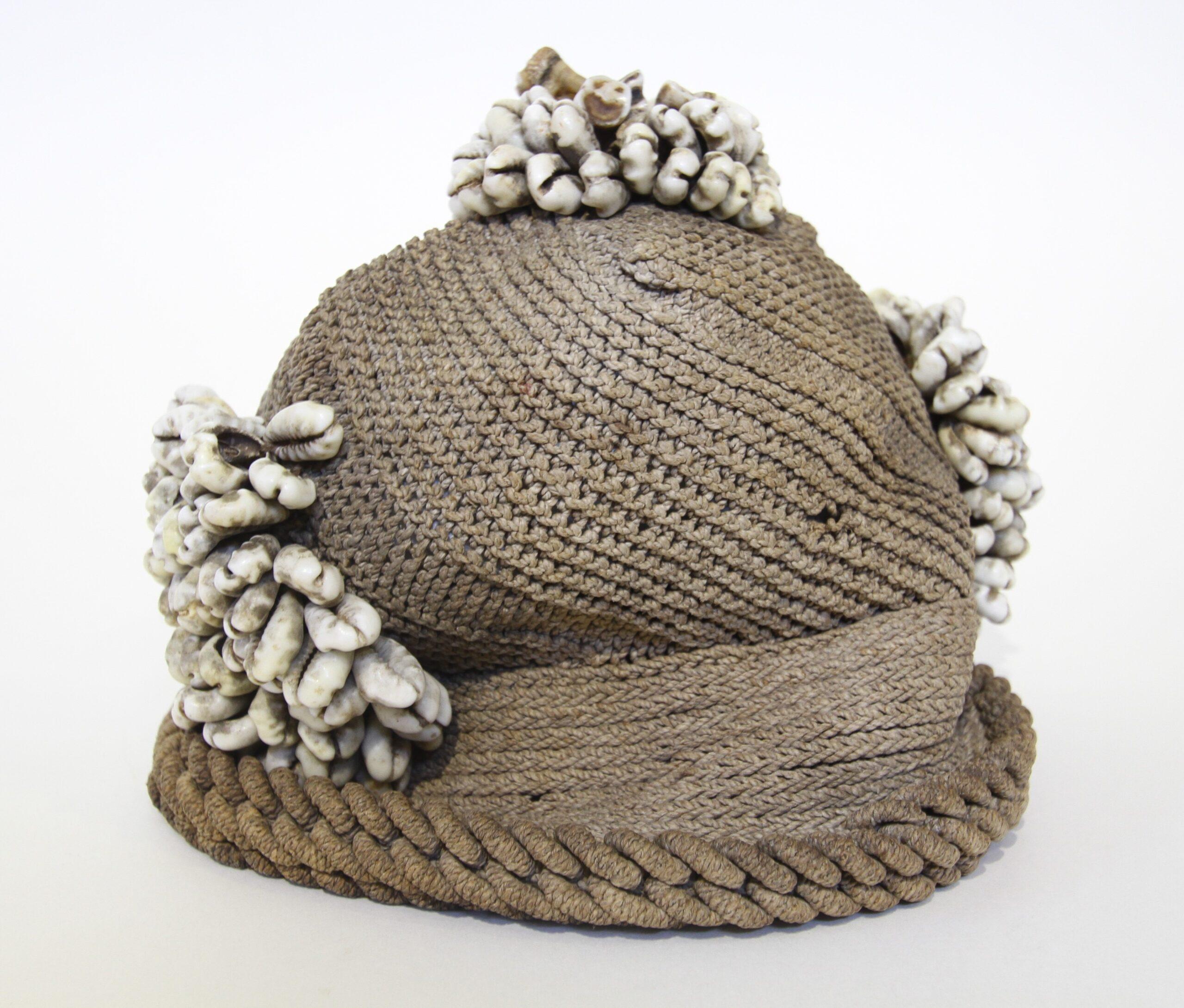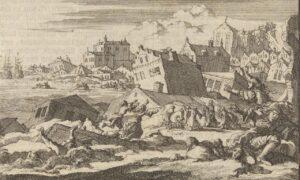Port Royal and Jamaica’s archaeological treasures


Recently, I was part of a lively discussion on Facebook regarding a display of archaeological finds from Port Royal, Jamaica, at the St Augustine Pirate and Treasure Museum, in St Augustine, Florida, a town also historically associated with piracy. The museum is privately owned, and a popular tourist attraction, and provides an immersive experience of “pirate life” to visitors. The museum is owned and operated by Pat Croce, a former sports executive and piracy enthusiast, who has amassed a large collection of piracy-related artifacts and who has published several popular books on the subject.
The “Port Royal treasure” displayed includes several beautiful objects: ceramics from China and other sources, coinage, a hand bell in the shape of a woman with a wide skirt, and what appears to be carved jade objects, presumably also from China. The jade and ceramic objects, as well as the coins, are probably of significant historical and market value, and illustrate the cosmopolitan nature of Port Royal which served as an affluent trading post and the home of privateers, pirates and slavers, where different worlds met and collided, helping to birth modern Jamaican society and culture. Port Royal’s glory was, of course, short-lived and brought to an abrupt end by the catastrophic 1692 earthquake and tsunami, and rebuilding efforts were thwarted by several other natural disasters in the decades that followed. Today, it is one of Jamaica’s most important heritage sites, which is now being developed as a major tourist attraction and cruise-ship port.
As the Facebook discussion on the Port Royal display in St Augustine progressed, the question was raised as to how these obviously important objects had landed in this private, Florida museum and, by implication, why they are not in Jamaican public collections such as those of the Institute of Jamaica or the Jamaica National Heritage Trust. Several participants noted that quite a few artifacts that were found during early underwater excavations in Port Royal somehow made it to the market and are now in private and, in some instances, museum collections, locally and abroad. And, inevitably, it was suggested that this may have involved the illicit removal of, and trading in important archaeological finds.
The name of Robert Marx was mentioned. Marx, an American, was a professional scuba diver and adventurer, and one of the pioneers of underwater archaeology, a colourful and controversial figure who died in Florida in 2019. His critics describe him as a “treasure hunter”, rather than as a professional archaeologist, who embarked on “Indiana Jones” type adventures. He was in the 1960s contracted by the Jamaican Government to conduct underwater archaeological research on the submerged part of historic Port Royal and worked in the island from 1965 to 1968. According to my interlocutors, his relationship with the Jamaican authorities was tumultuous, with accusations of improprieties on both sides, and his tenure in Jamaica appears to have ended abruptly. Marx was also a prolific writer, and he published several books about Port Royal, the best known of which is Port Royal: The Sunken City (2003). In that book he alleges that there was a major theft at the then Port Royal Museum in 1971, in which a number of important artifacts were stolen, although there is apparently no other published information on that subject.
This initial Port Royal archaeological campaign, which was followed by other such campaigns, overseen by overseas and local archaeologists, yielded a significant number of artifacts and I understand that the National Museum of Jamaica has custody of some 2,500 Port Royal objects, several of which are of importance. While there are some questions about the provenance of this object, this includes an Mbala-style prestige hat, made from fibre and cowry shells, which is presently on view at National Gallery West in Montego Bay. If this artifact was, indeed, part of the historic Port Royal finds, it would suggest that free Africans of high social rank were present in late seventeenth century Port Royal, and this would shed important new light on the complexities of the cultural and economic interactions at this cosmopolitan trading post, and on parts of that history that are not highlighted in the prevailing narratives about the Atlantic trade at that time.
Robert Marx, himself, apparently amassed a substantial collection of valuable Port Royal artifacts, many of which were sold after his retirement and death. We have no way of knowing how, exactly, he acquired his collection, and whether this was done with the knowledge and consent of the Jamaican Government, but some of the Port Royal artifacts on display at the St Augustine Pirate and Treasure Museum may have come from this private collection. I am not suggesting that these objects were acquired illegitimately, as there is insufficient information to support such an assertion, but it would certainly be useful for the relevant parties to look into their provenance, in the event that there is a case for their restitution to Jamaica.
The broader question arises regarding how much of its antiquities Jamaica has lost to looting and other forms of illicit or other questionable trade practices, historically and in modern times. This is a perennial problem in heritage protection, especially in countries with weak legal provisions and lax oversight, compounded by a lack of resources. Subsequent to the earlier-mentioned Facebook conversation, I happened upon a case study on Port Royal on the website Trafficking Culture which is dedicated to “researching the global traffic in looted cultural objects” (the article can be found here: https://traffickingculture.org/encyclopedia/case-studies/port-royal/). The article provides an interesting account of the history of looting at the Port Royal site, which started soon after the 1692 earthquake and includes some appalling instances in modern times. It also speaks to the efforts of the Jamaican Government to regularize the situation but concludes that the site remains vulnerable. I can only imagine how much invaluable archaeological information and important artifacts were lost in the process.
The new Port Royal Museum, which is under construction at Old Coal Wharf, adds a new sense of urgency to this matter. I have my doubts about the appropriateness of building a major national museum at a location associated with a cruise-ship terminal, as this suggests that creating a new tourist attraction is privileged over local museum engagement, but it is nonetheless the most important museum development project in recent history in Jamaica, in a field which has otherwise been quite stagnant. There have been several announcements, in recent years, about the projected opening date, the most recent of which was made during this year’s budget debate, when Prime Minister Holness announced that the opening was now planned for December. It will be very interesting to see what is on display, especially in terms of Taino and Port Royal artifacts, as many in the national collection have never been exhibited, and how the history of Port Royal and Jamaica will be narrated. It is also an opportunity for Jamaica to get its act together regarding the looting and illicit trading in its antiquities, and to embark on restitution requests when and where this is appropriate.
On the subject of restitution, it would be good to hear from the Ministry of Culture, Gender, Entertainment and Sport where things are at with the restitution claim it had announced in 2019 for several major Jamaican Taino sculptures, the so-called Carpenter’s Mountain Zemis, that are in the British Museum collection. The matter received international press attention at that time, and immediately met with resistance from the British Museum, but there have been no updates on this subject for a while. It would be good to know whether the Carpenter’s Mountain Zemis, which were removed from Jamaica in the late eighteenth century, will ever be seen here again.
Dr Veerle Poupeye is an art historian specialized in art from the Caribbean. She works as an independent curator, writer, researcher, and cultural consultant. The second, revised and expanded edition of her best-known book “Caribbean Art” was recently published in the World of Art series of Thames and Hudson. Her personal blog can be found at veerlepoupeye.com.






